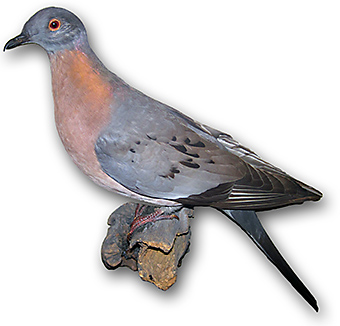Nation Building
With Confederation in 1867, Canada transitioned from a collection of British colonies to a country in its own right. From the perspective of conservation, the most important aspect of Confederation and the associated Constitution Act was the division of power between the provinces and the federal government. The provinces were awarded exclusive control of lands and resources within their boundaries and given primary responsibility for their management. Wildlife was not mentioned in the Constitution Act directly but has since been interpreted to be a component of the land, and therefore, is also under provincial control (Kennedy and Donihee 2006).
There are a number of specific provisions in the Constitution Act that create exceptions to the general rule of provincial control over wildlife. In particular, the federal government has control over the management of fisheries, most migratory birds, and endangered species. It also shares responsibility for various aspects of environmental management that impinge on conservation indirectly, such as the control of pollution and the environmental assessment of certain types of industrial projects. Finally, the federal government has retained partial control of land and resources in the territories and has full control over certain other areas, such as national parks.
Confederation was followed by a period of vigorous nation building. Settlement of the West was a top priority for the new national government and was supported by the building of a transcontinental railway and a campaign to draw immigrants from all corners of Europe with offers of free land. These efforts were highly successful in terms of their stated goals. By 1911, Canada’s population had more than doubled from the time of Confederation, to 7.2 million (SC 2014a). Export markets grew in importance and began to include a wider range of products. Businesses were established, a service sector was developed, and urban centres grew in size and importance.
Economic growth and the great wave of immigration led to increased environmental degradation. The problems were similar to those of earlier periods but the rate of change was now much faster. In the space of only three decades (1881–1911), the area of farmland in the Prairie provinces increased from 1.2 to 24.3 million hectares, comprising over half of all farmland in Canada. Canadian wheat exports rose 16–fold, to 97.6 million bushels (SC 1983a). Not only were there more people in more places than ever before, but growing external markets for resources placed increasing and unsustainable demands on natural systems. Last but not least, the frontier mentality and human-centred worldviews of earlier periods remained largely intact, muting concerns over the ecological changes that were occurring.
An important feature of this period was the existence of markets for wildlife meat and parts, which increased the rate of harvest far above that needed to meet local subsistence needs. Unsurprisingly, targeted species declined precipitously. A prominent example is the plains bison, which once roamed the Great Plains in the millions. By the late 1880s, the Canadian bison population was extirpated and only a few hundred individuals remained in the US.
Market hunting of bison was initially conducted mainly by the Métis from Manitoba’s Red River region (Dobak 1996). By the mid-1800s, their hunts had evolved into highly organized biannual events, sometimes involving over a thousand individuals. The bison meat provided winter provisions for Métis families and also supported a thriving trade with the Hudson’s Bay Company and European colonists. The 1870s brought hide hunters, who “killed lavishly for the one or two dollars per mature hide that American tanners were prepared to pay” (MacEwan 1995, p. 59). In fairly short order, all that was left of the vast bison herds was their bones, which were later collected and ground up as fertilizer.

A similar fate befell the passenger pigeon (Fig. 2.2), which went from being the most abundant bird in North America to extinction in the late 1890s. These pigeons had always been hunted because their colonial nesting habits and large numbers made them an irresistible target. The tipping point to unsustainability occurred when hunting became commercialized and then increasingly mechanized in the late 1800s. By the end, railcars were annually shipping pigeons by the millions to markets in large cities (Yeoman 2014). Although market hunting was not the only factor involved in the demise of the passenger pigeon (Bucher 1992), extinction is unlikely to have occurred without it.
Trade in meat was not the sole focus of market hunting in the 1800s. The fur trade was still important at this time, and there was also a thriving whaling industry that was providing whale oil for lamps and baleen for corsets. This would eventually land many whale species on the endangered species list. Last, but not least—not to be outdone by the gentlemen and their beaver hats—ladies started a craze of their own involving the use of feathers to adorn their hats. Innocuous as this may seem, the growing size and affluence of human populations in the late 1880s generated an unsustainable demand, leading to the decline of many North American bird species, including Canada’s own now-endangered piping plover (Doughty 1975). Wild bird feathers were also harvested for stuffing pillows, and this was one of the main drivers of the extinction of the Great Auk off the coast of Newfoundland in the mid-1800s.

